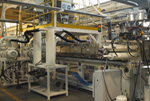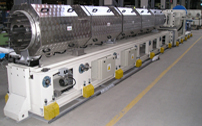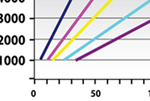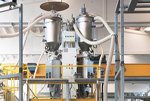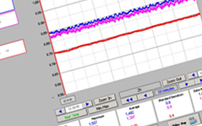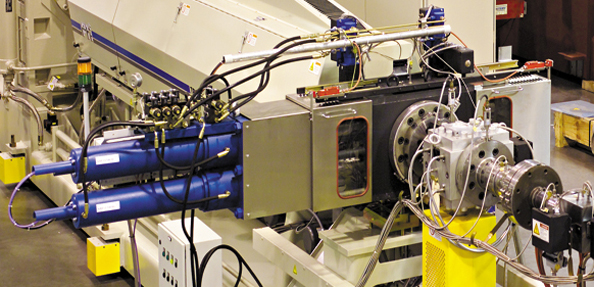
HVTSE® Polymer Filtration
 There are many styles and types of screen changers available throughout the industry. Given the rigorous demands that are characteristic for extruding sheet using HVTSE® technology however, drives the need for an advanced solution. A continuous operating screen changer is one that can make screen changes without having to stop or interrupt the production process. The continuous screen changer typically features multiple screen packs in the flow stream so that screen changes can be made to one of the flow paths while material continues to flow through the other(s). For HVTSE® systems it is important to minimize the operating head-pressure also referred to as the extruder back pressure. HVTSE® systems operate at typical head pressures of 100-120 bar. Screen changers featuring high-filtration areas (i.e.; large filtration surface areas) are used to minimize the frequency of screen changes and head pressure rise associated with a build-up of contaminants on the filtration screens. Once the head-pressure reaches a level representing nominally a 30 bar pressure rise the screen change process is initiated and continues one bolt at a time in order to maintain continuous operation until all the screens have been changed out. This coordinated process allows the extrusion of material to continue without interruption. The dual bolt 4 cavity screen changer offers a high level of active filtration area while minimizing the operating back pressure making it an ideal solution for the HVTSE® application.
There are many styles and types of screen changers available throughout the industry. Given the rigorous demands that are characteristic for extruding sheet using HVTSE® technology however, drives the need for an advanced solution. A continuous operating screen changer is one that can make screen changes without having to stop or interrupt the production process. The continuous screen changer typically features multiple screen packs in the flow stream so that screen changes can be made to one of the flow paths while material continues to flow through the other(s). For HVTSE® systems it is important to minimize the operating head-pressure also referred to as the extruder back pressure. HVTSE® systems operate at typical head pressures of 100-120 bar. Screen changers featuring high-filtration areas (i.e.; large filtration surface areas) are used to minimize the frequency of screen changes and head pressure rise associated with a build-up of contaminants on the filtration screens. Once the head-pressure reaches a level representing nominally a 30 bar pressure rise the screen change process is initiated and continues one bolt at a time in order to maintain continuous operation until all the screens have been changed out. This coordinated process allows the extrusion of material to continue without interruption. The dual bolt 4 cavity screen changer offers a high level of active filtration area while minimizing the operating back pressure making it an ideal solution for the HVTSE® application.